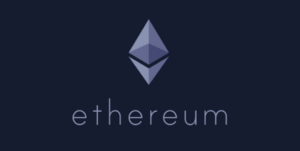Layer-2 Surge Causes Ethereum Layer-1 Revenue to Drop by Almost 100%

The Ethereum layer-1 network has experienced a significant decline in revenue, dropping by 99% since March 2024. This sharp decrease follows the implementation of the Dencun upgrade, which introduced substantial changes to transaction fees.
While layer-1 revenue has seen a steep decline, layer-2 solutions have flourished, attracting more users and providing lower fees, as indicated by data from Token Terminal. This shift has generated a mix of both concerns and optimism within the Ethereum community.
The Ripple effect of the Dencun upgrade became apparent after its launch on March 13, enhancing the efficiency of layer-2 transactions. Prior to the upgrade, Ethereum’s layer-1 revenue had surpassed $35 million. However, following the upgrade, fees began a rapid descent, eventually reaching around $600,000 by the end of August.
This transformation in fee structure has led to notable changes in user behavior within the Ethereum ecosystem. Transactions have become more cost-effective with the introduction of “blobs,” enabling layer-2 solutions to process transactions with reduced reliance on the layer-1 network for data availability.
As a result, Ethereum’s base layer revenue has plummeted. Despite the alarming nature of this decline, it signifies the rise of layer-2 solutions. The proliferation of active layer-2 projects, now totaling 74, has sparked a competition to lower transaction fees, ultimately benefiting users by enabling faster and more economical transactions.
While some Ethereum validators argue that the focus on fees is misdirected, emphasizing that fees are a byproduct of Ethereum’s utility rather than the primary goal, the community remains divided. The drop in revenues raises concerns about the network’s health and tokenomics, with the reduced burn rate of ETH tokens shifting from deflationary to inflationary.
In the midst of these changes, institutional interest in Ethereum is on the rise. Major companies like Coinbase, Circle, and financial institutions such as BlackRock are backing the network, indicating a more enduring adoption trend. This institutional support is viewed as crucial for Ethereum’s future growth, with industry experts highlighting the significance of established players entering the space.
Layer-2 scaling solutions are seen as pivotal in unlocking new opportunities and enhancing user experiences. Projects like Coinbase’s Base and Arbitrum have leveraged Ethereum’s leading liquidity to demonstrate that layer-2 scaling solutions can coexist and thrive alongside the base layer.
The increasing utilization of layer-2 solutions represents a significant shift in Ethereum’s revenue dynamics on layer-1. With the recent Dencun upgrade reshaping the landscape to enable cheaper and more accessible transactions, coupled with the growing institutional interest and user influx in layer-2 solutions, Ethereum appears poised for a transformative phase in its evolution.

